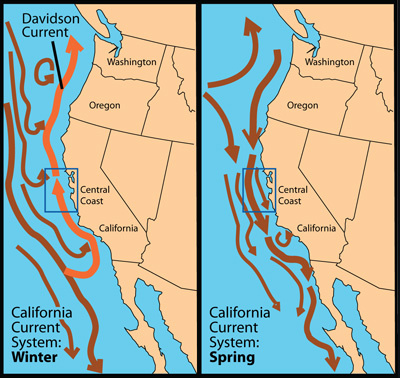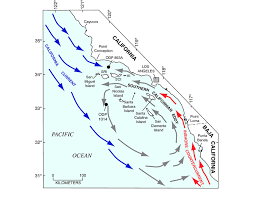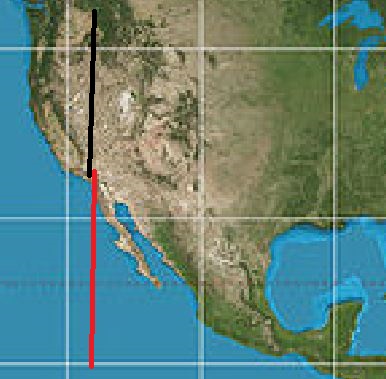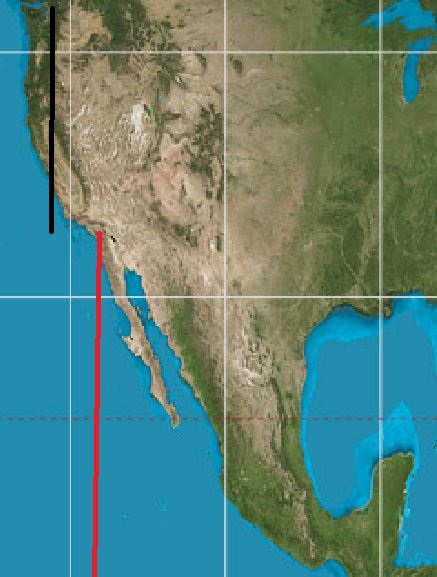This is our first day without guests and the ship has moved to a regular work day from 08.00 – 17.00 hrs. for those who now do not need to work shifts. Similar as with a dry dock, the Hotel department grabs the chance to turn all the cabins and the whole ship upside down. Compare it to the Spring Clean ashore. Also because it is now expected that we will be out of service for a considerable amount of time (see the publications to the outside world) the cabins are stripped from all linens and the mattresses put in an upright position as that is better for them when they are not used. This whole operation will keep everybody occupied for quite a few days, maybe even a few weeks. The Bar service is doing the same thing, turning all the bars upside down and having a complete inventory count. That is already normal practice but it is hard to get it completely right when service continues to the guests at the same time. Continue reading
Category: Destinations (page 2 of 6)
I am somehow not in synch with the world leaders as every time, just as I have published my blog, something exciting happens. Same yesterday, I put my blog on line by 1600 hrs. ships time; early as I had to go on standby to teach the cadet and at 16.30 hrs. the Captain received orders to stay in port and send all the guests home. After careful consideration the decision was made to abort our cruise and ask the guests to fly home, as at this moment they would still be able to reach home. As well as in the Europe, as in the USA and anywhere else, the countries could stop all (international) travel by Monday. Mexico is not yet in lock down as there are hardly any cases here but that might well happen as the numbers in other parts of the world continue to rise. Most of Europe will reduce travel and movement as of Monday and then it might become extremely difficult to get home. Continue reading
We live in a dynamic world and the moment we think all is going (relatively) well, the next thing happens. Last night I had barely posted my daily blog and the message from Stein Kruse came in that the whole fleet was going into a voluntarily lockdown for 30 days at the end of the current cruise. That means that our Noordam and Veendam are already out of service and that other ships are following step by step, when their cruise comes to an end. We, the ms Rotterdam are the exception, for the length of time we will still sail, due to the fact that we are making a Panama Canal cruise and we have to get to the other side. So the plan at the moment is to continue the cruise as scheduled and take it day by day, to see what the Virus is doing, to see what the Medical Profession is advising and to see how the politicians are reacting to it. Luckily the ms Rotterdam is safe and healthy and that is the most important thing. Our crew is sanitizing so much that “the paint is coming off the walls” and nobody has any symptoms or feels ill. Continue reading
With the Pacific Ocean behaving in a very “pacific” way, all was well in the world. The ocean surface was flat enough for the guests to pick out all the wild life around the ship and there was quite a lot as we are not too far from the shore today. We are sailing along the coast of Baja de California or the Californian Peninsula which has the large water gap of the Sea of Cortez that separates it from the Mexican Mainland. Plus we are right on the Whale – Highway between this area, Hawaii and Alaska. Whales swim from Hawaii over to the area south of Cabo San Lucas and then eventually go north to the feeding grounds of the Alaskan waters. Because they are congregating here, think in a mindset of several “whale lanes” coming together at a round-a-bout and then all going up the north lane; so this were you have the best sightings until you go to Alaska. Just before noon time today, some humpbacks gave a spectacular show on the port side of the ship, much to the delight of our guests.

The general status of the current of California and higher up. It brings cold water to the warmer waters south of Cabo San Lucass.
Unfortunately we passed most of this south point area during the night and missed the chance of seeing the waters around Cabo San Lucas. Where apart from the whales, there are also large shoals of Blue Marlin present. Attracted by the meeting of the cold and warmer ocean currents which brings up nutrients from the ocean depths and these nutrients and small animals form the start of the food chain for all sorts of other fish. Same as the whales, also the blue marlin is a seasonal visitor which goes deep ocean for most of the year. Around this time of the year it is high season around Cabo San Lucas when the Marlins are on the coast. The Operators have a regulated catch and return policy which means the fish stocks are not affected. Because we passed by at night we did not see all the charter boats going out and coming in, and I am quite happy about that as they do not always follow the rules of the road when regular traffic is coming through.

Every captain is a happy camper of he can ride the red current while going up the coast.
Then as soon as you are away from the area, the fishing boats disappear as they are all day boaters, the whale sightings get less as the area where they swim is increasing, and we get the regular ocean traffic back which is on the way from North America to the Panama Canal or vice versa. Nasty thing for us here is, that most of the time we have the California current against us which brings cold water down from the Gulf of Alaska to the Cabo San Lucas area. Hence the reason why the whales like to travel this route; it is nice and cold. Thus most of the time we are battling against this current on our way to San Diego. But not always; sometimes the warm counter current (which is caused by the colder water pressure coming down and replacing / pushes away the warmer water) lays a bit further off shore and we just catch it. I have never been able to predict exactly when this happens as no doubt a lot of local circumstances play a role here. Fact is, when the warm water current moves, we get more fog around the area near Cabo.

The Mercator Projection which is used by most display charts. USA and Mexico are almost the same.
Tomorrow we have our 2nd sea day and we will still be traveling along the coast of Mexico. Not many people realize how long (North/West) Mexico really is and part of that is due to the false representation on the geography maps that we use. Most of them use a Mercator projection, which is only 100% correct at the point where its projection touches the Earth’s globe. The further away from this point and the larger the distortion. That is why Greenland looks so very big, although being of a reasonable size, it does not go so wide at the top. A better projection is the Peters version, which gives the continents in the right size / context to each other but is distorted in the way it is represented as a flattened globe. The Mercator version distorts the closer you come to the poles and thus Mexico looks a lot smaller than the USA and Canada. You only really understand this when you are on a ship and you travel for days with the same speed. Then you realizes it takes longer to sail the west coast of Mexico then the west coast of the USA.

The Peters Projection. The Mexican west coast is now suddenly a lot longer.
Tomorrow we are at sea for our 2nd day. Still along the Mexican coast. Then by 04.00 on the 11th. We enters USA waters and sail for the San Diego Pilot station. Weather has been forecast to still be good and thus we should have a nice final day of the cruise.
We have a schedule, it starts off with the best intentions and then something un-expected happens. We did arrive at 05.00 and in the end we approached the First locks, the Gatun locks at 07.00 hrs. but by the time we came out, there was a challenge in the works. Ahead of us was the Wind Star from Wind Star cruises which once in the past belonged to Holland America, until it was decided that sailing motor yachts for an incentive market were not really compatible with cruise ships in the premium markets and thus the company was sold off to an equity fund. (Or some similar sort of investor). But sailing ships have very high masts. And she only fits under the Bridge of the America’s at low tide. (That bridge is at the Pacific side and the Pan American Highway passes over it) Once the convoy starts going, then it cannot stop anymore and for some reason there was no option to put the Wind Star alongside somewhere until the tide was right. So we had to wait from some 30+ minutes. Apart from her, there was one other cruise ship in today, the Seven Seas Splendor, which was “one behind” meaning there was another ship in between, in this case a Car Carrier, or “Auto Boot” in the Dutch Language. Continue reading
There is a difference between the way we as sailors see the weather and the way the guests see it. For the latter, it is nice, or it rains, or it is cold or a combination of the various options. For a sailor, especially a ship handler, it is not important if it is cold or sunny or gloomy; it is all about the elements that have a direct influence on the ships behavior. Wind, Swell and Current. 14 days ago the guests had a great day at Grand Turk, although we had to share it with a mega liner from Carnival. Today we had an even better day as we were by ourselves. But for the captain last cruise was a very bad day as docking was on the edge of what was possible with the Veendam. Strong winds from the wrong side so when docking we had to push full power against the wind to get alongside. The current made it even worse and the help that the Carnival ship could have rendered by acting as a wind breaker, did not happen as she only arrived 2 hours later. Then today things were much better. First of all we docked at the other side of the dock, so instead of pushing against the wind, we could break the momentum that the wind was giving the ship, which is much easier; and there was a lot less wind, swell and current, so everything was well within the parameters of feasibility. On top of that as a bonus for the guests, we were the only ship in port today. So all reserved solely for the 1200 guests we had on board. Continue reading
Regular Caribbean Sea weather to day. Although we are in the North Atlantic Ocean, this area is fully under the influence of the Trade Winds, which also dictate the weather in the Caribbean Sea, so there is really no difference. They decided to name the Caribbean Sea, the Caribbean Sea because it is enclosed all the way around with Caribbean islands. Starting with Trinidad and going up all the way to the Western Tip of Cuba. I just wonder how history would have treated the area if Hispaniola (Haiti and the Dominican Republic) and Cuba would have been missing and there would have been a completely open area all the way up to Freeport? Would it have been the Greater Bahamian Sea or the Gulf of Jamaica? Who knows, the naming of locations do not always make sense. Columbus discovered the America’s but we have called the America’s after Amerigo Vespucci who came sometime later. (Although while Columbus thought he was also in India, Amerigo was the first who proved that North and South America where not part of Asia) Continue reading
It was a beautiful day, sunny not too warm but a little bit windy. As a sailor I would like to have seen a bit less wind at the anchorage but luckily we had shore tenders today as we were the only ship. And for the guests it did not matter at all as the beach and most of the facilities are on the lee side, so it was perfect and the breeze kept the temperature down. We had all the shore tenders available because we were the only ship. If there is another HAL ship in, then the biggest ship gets the two large shore tenders and the smaller ship (and the Veendam is always the smaller ship) the two smaller shore boats but often then has to augment the tender service with its own ships tenders. I would not be amazed if the company will keep investing in more ship – to shore transport so it will get easier and easier all time. But today we were all by ourselves and thus not a worry in the world. Continue reading
Today we are having a relaxing sea day while the ms Veendam sails towards Grand Turk Island in the Turks and Caicos Islands. To get there, there is only one way to go and that is directly, north of the Grand Bahama Bank and then to follow its edge all the way down. That is the straight and the direct route. There is a plan B (A good sailor always has a plan B, even if it means not sailing at all) and that is going around the Bahama Bank on its south side, north of Cuba. That is a much more sheltered route but a much longer route as well. Now we are scheduled to arrive at 08.00 tomorrow morning, if going the other way we would be lucky to make it by lunch time. Still if needed, we would do so. As we do not want a ship full of sea-sick guests. Continue reading
Cozumel is a favourite port for the 7 day Mass market ships and thus we had The Carnival Glory, The Liberty of the Seas and the Anthem of the Seas in port today. (I think this is at the moment the largest cruise ship in the world) This as the port fits right in the triangle, Miami, Grand Cayman and Labadee /Haiti (for RCI). We call here as it gives another port when we alternate our cruises. But it is hard to get here for an early morning arrival and hence we docked at 11 am. Ships that go the other way, normally spend a day at sea while sailing towards Grand Cayman or have a late morning arrival there in the same way as in Cozumel. Most ships stay in Cozumel until 23.00 hrs. Holland America tries as a standard to have one evening call in port during a cruise but that does not always work out, if there is nothing to do in the port after 18.00 hrs. Cozumel is blessed with an exciting night life as long as you think in the terms of Carlos & Charlie’s, Senor Frogs and you want to brush up on your Conga Line Dancing. Which is normally not a problem after consuming a bucket of beer, or one of their special Margaritas Continue reading
© 2025 – Captain Albert's Website and Blog –
Theme by Anders Noren — Up ↑
